It happens when the Moon reaches opposition—placing Earth between the Moon and the Sun—during the earliest days of northern winter. Yet unlike other full moons, this one rises under a sky shaped by the winter ecliptic, a steeper nightly angle that carries the Moon unusually high above the horizon for many locations in the Northern Hemisphere. The result is a visually stunning Moon with enriched contrast, boosted brightness, and prolonged visibility that commands winter nights when darkness lingers longest. Beyond beauty, the Cold Moon acts as an annual case study for orbital motion, light scattering, humidity-driven transparency, and the reflective power of snow and ice, making it scientifically valuable for both observers and researchers. This article uncovers the physical mechanics that create its winter brilliance and explains how December’s full moon became a natural laboratory for studying the Moon, the air, the land, and their interconnected physics.
Cold Moon science: astronomical mechanics, seasonal optics, and winter light physics
The term Cold Moon describes the full moon occurring in December, a designation tied historically to seasonal chill but rooted astronomically in orbital geometry. A full moon occurs when the Moon reaches opposition, meaning its ecliptic longitude is 180° away from the Sun’s. In this alignment, Earth sits between the Moon and Sun, allowing sunlight to illuminate the Moon’s Earth-facing hemisphere completely. What sets the December full moon apart is its context within the seasonal ecliptic. In early winter, northern locations experience a high nighttime ecliptic arc, which elevates the full Moon toward greater declination values. Because the Moon closely tracks the ecliptic path, December full moons climb higher in night skies for observers at mid-northern latitudes than full moons in summer months.
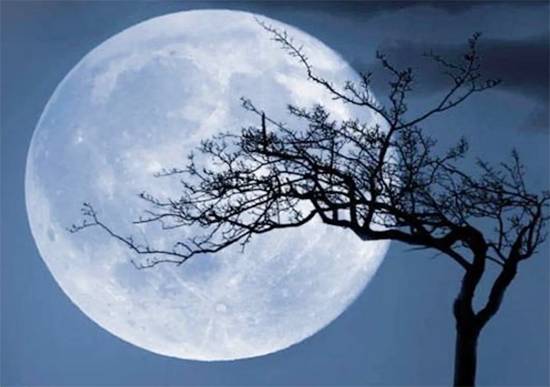
December full moons occur once per year but do not fall on a fixed date because lunar phases repeat every 29.53 days (the synodic period), which does not divide evenly into a 365-day year. Typically, the Cold Moon appears between December 3 and December 12, though variations occur based on the wider Moon-Sun-Earth cycle. This full Moon carries the seasonal imprint of longer nights, steeper solar opposition geometry relative to the local horizon, and often colder, drier air that enhances visibility. The Cold Moon’s annual arrival signals the peak of winter night dominance, presenting observers with sustained hours of illumination for sky studies, photography, and surface observations.
Why winter full moons appear unusually bright
December’s full moon frequently looks clearer and brighter than its counterparts, even when it is not near perigee. Multiple physical and atmospheric factors combine to create this impression. A higher lunar altitude reduces the thickness of atmosphere that moonlight must traverse, which directly lowers atmospheric extinction and the scattering of photons out of line-of-sight paths. This allows more direct lunar flux to reach the observer’s eye or sensor without being deflected or absorbed by clouds of microparticles. In winter, air holds less moisture and often contains lower concentrations of suspended aerosols such as dust and pollen, both of which increase scattering and smearing of light in warmer months. The winter atmosphere’s reduced particulate load means fewer obstacles for lunar light, producing improved signal-to-noise and greater optical contrast.
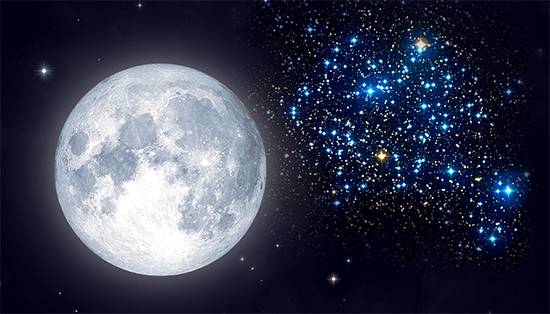
Rayleigh scattering still occurs in winter air because it is inherent to gas molecules interacting with shorter wavelengths, but with fewer competing absorbers and droplets to create Mie scattering (which dulls white light and softens edges), the net effect enhances the Moon’s relative brightness and surface detail. The Moon shines primarily in broadband reflected sunlight, weighted toward white-yellow wavelengths. These wavelengths scatter less than blue light, so in a transparent winter column the yellow-rich lunar reflection retains luminosity efficiently. The human eye interprets this high-elevation, low-turbidity lunar disk as more radiant, not because the Moon emits more power, but because Earth’s winter air delivers more of that power intact.
Temperature-driven turbulence can vary, but calm winter nights often produce stable air masses with less vertical convection than sun-heated summer evenings, reducing image wandering. This steadiness prevents brightness from being diluted across a larger seeing blur disk. Even without a true brightness change in space, the combined winter path effects can make December full moons appear strikingly luminous, particularly in low-light rural environments.
Orbital geometry and lunar motion in December
The Moon follows a 5.145° inclined elliptical orbit around Earth with an average eccentricity of 0.0549. Its orbital nodes regress with an 18.6-year cycle, and its ellipse precesses on an 8.85-year cycle, which means perigee and apogee positions drift relative to the stars and seasons. A full moon’s sky height is influenced by the Moon’s declination, which depends on its position relative to the ecliptic and nodes at that moment. In December, the full moon tends to occur when the Moon is near high northern declination because it lies opposite the Sun, and the Sun occupies low declination values during northern winter. This mirror-opposite placement lifts the Moon high at night for northern observers.
The December full Moon rises earlier than average because winter full moons are close to the time the Sun sets, and the ecliptic’s nightly tilt favors a more upward rising vector instead of a shallow skimming climb. Earlier rise times extend visibility and lengthen observation windows compared to summer full moons, which often hug lower paths. Occasionally, the Cold Moon coincides with perigee, making it a Supermoon event that enlarges its angular diameter by up to ~14% compared to apogee full moons. Some years fall near a major lunar standstill phase of the 18.6-year cycle, further increasing possible declination maxima. Lunar libration—apparent rocking due to axial tilt and orbital speed variation—can peak favorably in winter months, opening enhanced limb views.
Orbital timing rather than Earth’s shadow or cloud interactions creates these extended oppositional conditions. For scientific observers, this high-declination opposition geometry allows optimally long, unobstructed tracks for equipment without horizon interference. December thus repeatedly places the Moon in one of the most observationally efficient nighttime positions of the year in many northern skies.
Seasonal timing and the winter solstice connection
December full moons land near the Winter Solstice, when Earth’s axial tilt (23.5°) angles the Northern Hemisphere away from direct solar heating. This causes the shortest daylight spans and longest nights of the year north of the equator. The Cold Moon therefore appears within a seasonal frame of maximum darkness, increasing its subjective dominance and measurable contribution to nighttime illumination.
During early winter, reduced incoming solar energy gradually cools ground and air temperatures, establishing snowpack and frozen surfaces over many regions. Earth’s nights become extended canvases for reflected light and shadow formation. Moonlight operates as the only consistent natural illuminant for long winter hours outside of twilight boundaries. The Cold Moon’s average high elevation during this period means observers capture peak duration lunar arcs when darkness is most complete. This dark-biased seasonal timing elevates both its visual symbolism and scientific usefulness in winter chronobiology, photometry studies, and optical recording.
How snow and ice amplify moonlight
Surface reflectivity, or albedo, becomes a crucial amplifier of lunar brightness in winter landscapes. Fresh snow can reflect as much as 80–90% of incident light, throwing photons back into the lower atmosphere and toward the eye or instruments. The full Moon itself produces a dim illumination in lux compared to the Sun, but when its light is bounced from high-albedo surfaces, the reflected field grows significantly brighter than a grass- or soil-based reflection. In optimal conditions, reflected Moon illumination on snow can approach ~0.25 lux, which is sufficient for shadow casting, patterned surface photography, and low-noise optical registration by sensitive sensors.
Ice-covered lakes and crystalline frost can generate specular and semi-diffuse reflection mixes that strengthen contrast at small incident angles. Rural winter stretches lacking strong artificial lighting show the highest relative gain, because no competing point light sources saturate or wash out the faint luminance. In these areas, long exposure images show snowpack behaving as a distributed reflector, brightening surroundings under full Moon conditions more efficiently than at any other time of year. This effect peaks under December’s high-altitude Moon geometry, labeling the Cold Moon period as the most powerful snow-boosted lunar illumination cycle annually for many northern regions.
Observation advantages for astronomy
December’s high lunar altitude, lengthy winter nights, and improved atmospheric contrast create scientific benefits for telescopic studies, imaging, and event tracking. Craters with strong ray ejecta, such as Tycho, retain ray pattern contrast exceptionally well when observed from higher altitudes with low Mie scatter interference. Large maria like Mare Imbrium appear more texturally distinct in winter transparency.
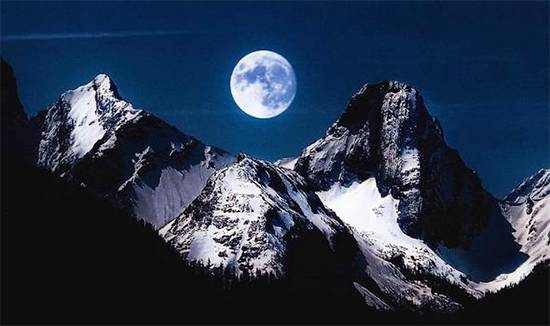
Libration windows often expose enhanced limb zones, enabling mapping of border highlands and mare margins that are less evident when seeing blur dominates. Because winter convection can be reduced in still nighttime temperature inversions, many nights offer stable seeing pockets for sharper surface imaging at mid–high latitudes. December full moons also enable diverse occultation opportunities, especially when passing across dense star regions in the zodiac sky band.
Astrophotography benefits from clean atmospheric channels that preserve white-yellow flux, and higher nightly arcs simplify full-track recording without horizon obstruction. Binocular surveys and moderate aperture telescopes (90–130 mm) capture surface contrast that feels exaggerated compared to humid, low-angle phase months. Thus, the Cold Moon season is naturally positioned for high-quality lunar surface science and optical tracking.
Scientific research values
Seasonal full moons provide measurable data useful for planetary and climate optics research, reflectance science, biosignal studies, and environmental photometry. Scientists monitor snow-powered nocturnal light feedback as a proxy for albedo influence on Earth’s energy balance and night sky brightness shifts. Lunar photometry in winter helps instrument teams calibrate low-scatter atmospheric transmission models.
Wildlife chronophysics researchers examine how winter Moon illumination influences nocturnal movement cycles, predator-prey visual ranges, and long-night behavioral adaptation. Modern observation often combines orbital predictions with ground reflectance conditions to analyze winter light ecosystems.
Long-term Moon visibility statistics supplement studies of seasonal transparency trends, humidity cycles, and aerosol content, contributing indirectly to climate proxy modeling. Because December generally places the Moon high at night, researchers enjoy longer annual surface illumination tracks delivered through a clearer air mass, creating higher-quality winter datasets.
Cultural origins explained through environmental astronomy
Historical cultures used environmental markers to label winter moons, anchoring names to temperature, light scarcity, and shadows generated by steep winter angles. Native American naming traditions connected December’s full Moon to freezing seasons. European winter cultures tied the last yearly full Moon to holiday timing and long nocturnal shadows.
In East Asian lunisolar calendars, winter festival periods often coincide with December or near-December lunar oppositions, making this Moon a temporal marker for seasonal transition. The alignment of Moon opposition near the darkest nights allowed ancient observers to plan nights of illumination for winter travel, seasonal rituals, or environmental signaling, embedding observational utility into cultural identity.
The name Cold Moon, while poetic, fits what ancient sky watchers and land observers experienced: a Moon that rises higher, lasts longer, casts sharper shadows, and illuminates reflective terrain in a season when illumination mattered most.
Modern tips for observing the Cold Moon
effective Cold Moon observation focuses on local winter sky transparency, horizon-free elevation, dark adaptation, and snow geometry where available. Choose clear, frigid nights to reduce droplet-driven scatter. Rural or high-latitude snowpack areas maximize albedo amplification.
Ideal handheld optics include 10×50 binoculars or moderate 90–130 mm telescopes, which pair resolution with manageable seeing sensitivity. For imaging, longer focal ranges around 200–600 mm capture crisp surface contrast.
Avoid bright artificial flood zones to preserve subtle luminance gains from snow. Plan sessions earlier in evening to exploit early rise times. Use lunar phase calendars and declination data to time high-altitude arcs and possible libration benefits. Winter photography captures stronger natural shadow structure because of high surface contrast combined with the long darkness frame. These conditions make December full moons not only beautiful but measurably optimal for observation and imaging.
The physics of winter’s luminous finale
The Cold Moon closes the year during a period when orbital opposition geometry aligns with the highest nighttime ecliptic path, Earth’s darkest spans of the year, and cleaner, drier atmospheric columns that preserve broadband yellow-white flux. Snow and ice introduce powerful albedo returns that magnify its perceived brightness enough to shape shadows and enable high-contrast imaging. December’s full Moon does not bend the laws of celestial illumination, but Earth’s seasonal optics deliver its light with greater efficiency and enhanced surface bounce, making it feel brilliantly intensified. The Cold Moon is a recurring convergence of orbital mechanics, scattering physics, winter air transparency, reflective terrain, and darkness dominance that explains why it repeatedly looks like the brightest, longest-hanging full Moon of the year, marking winter’s final lunar spectacle with clear, measurable physics.

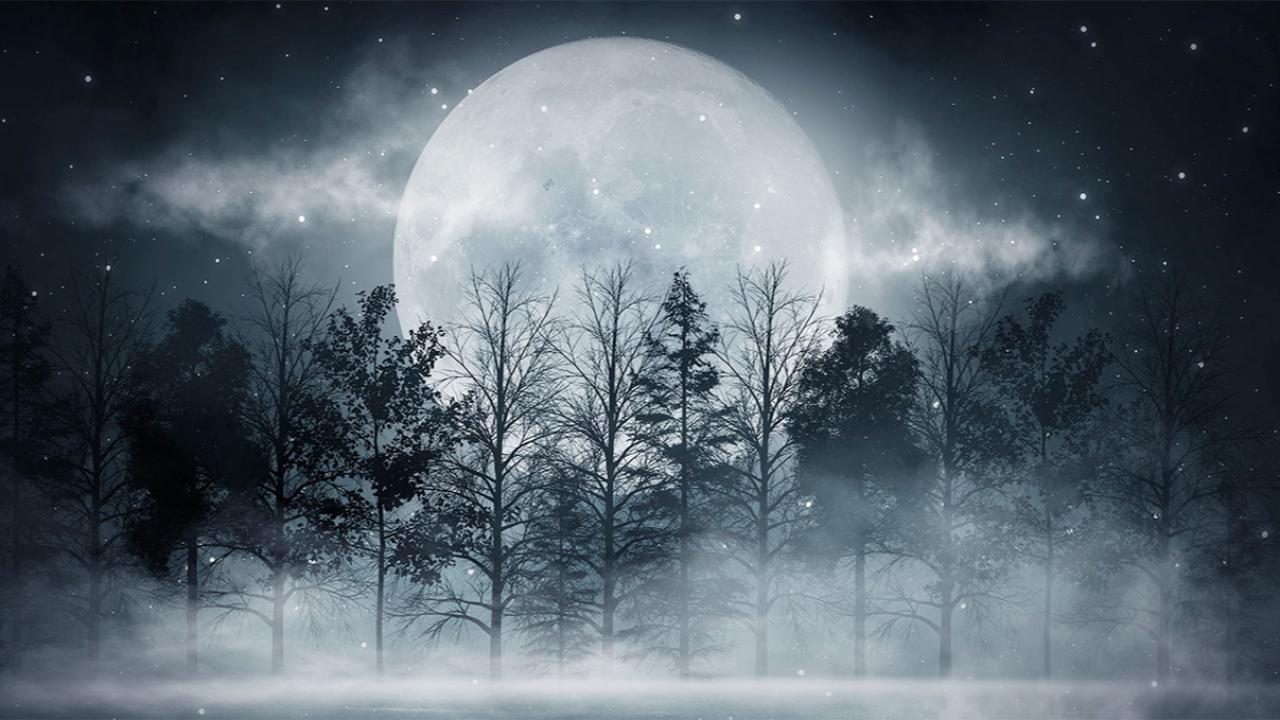
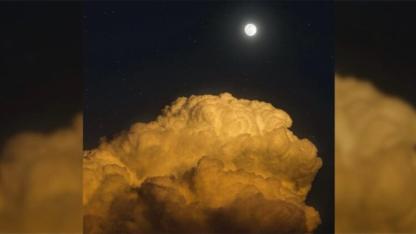


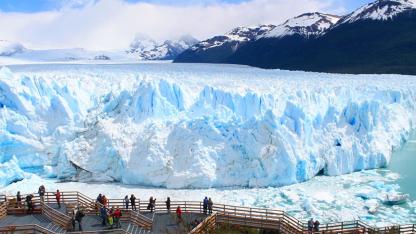
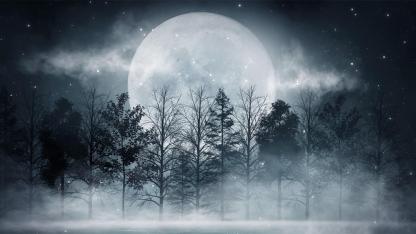
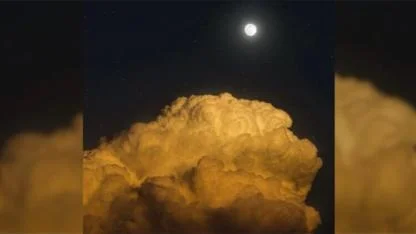



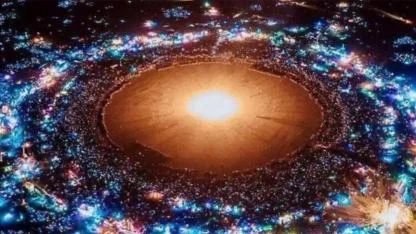
Yorumlar
Kalan Karakter: